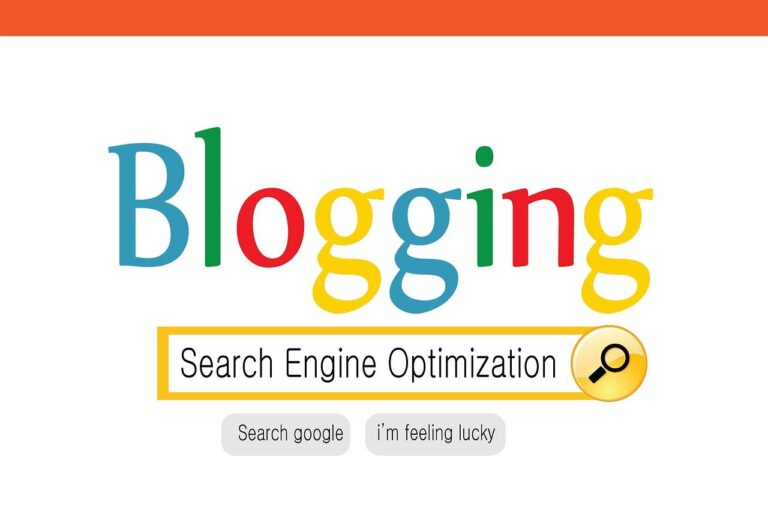Content marketing is a powerful tool for holistic practitioners to engage their audience and grow their practice. Measuring the success of these efforts is crucial for understanding what resonates with your target audience and refining your strategies.
By tracking key metrics and utilizing the right tools, you can gain valuable insights into your content’s performance. This enables you to make data-driven decisions to improve your marketing ROI.

Effective measurement of content marketing success involves more than simply counting website visitors or social media followers. It requires a comprehensive approach that examines various aspects of audience engagement, conversion rates, and long-term impact on your practice.
From website analytics to social media metrics, there are numerous data points you can leverage to evaluate the effectiveness of your content marketing efforts.
Key Takeaways
- Track key metrics to gain insights into your content’s performance and audience engagement
- Utilize analytics tools to measure the success of your content marketing efforts
- Interpret data to refine your content strategies and improve marketing ROI
Understanding Content Marketing Success
Content marketing success for holistic practitioners involves setting clear goals, tracking key metrics, and adapting strategies based on results. Measuring effectiveness allows you to optimize your efforts and achieve better outcomes.
Defining Success in Content Marketing for Holistic Practitioners
Success in content marketing for holistic practitioners means achieving specific business objectives through your content efforts. Your goals may include increasing website traffic, generating leads, boosting engagement, or improving conversions.
Define what success looks like for your practice. This could be:
- Growing your email list by 20% in 6 months
- Increasing organic search traffic by 30% year-over-year
- Boosting social media followers by 1000 in a quarter
Set SMART goals (Specific, Measurable, Achievable, Relevant, Time-bound) to give your content marketing efforts clear direction and purpose.
The Importance of Measuring Content Marketing Efforts
Measuring your content marketing efforts is crucial for understanding what works and what doesn’t. It allows you to:
- Identify top-performing content and replicate its success
- Spot underperforming areas and make improvements
- Justify your content marketing investments
- Allocate resources more effectively
Regular measurement and analysis help you refine your strategy over time. Use tools like Google Analytics to track key metrics such as page views, time on page, and bounce rates.
Monitor engagement metrics like social shares, comments, and likes to gauge audience interest. Track conversions to see how well your content drives desired actions.
Key Performance Indicators (KPIs) for Holistic Practitioners
KPIs provide valuable insights into your content marketing performance. By tracking specific metrics across traffic, engagement, conversions, and retention, you can make data-driven decisions to optimize your holistic practice’s online presence and impact.
Traffic Metrics
Traffic metrics measure how many people visit your website and where they come from. Key traffic KPIs include:
- Total website visits
- Unique visitors
- Traffic sources (organic search, social media, referrals)
- Pages per session
- Average session duration
Monitor these metrics to understand your content’s reach and identify which channels drive the most visitors. Use Google Analytics or similar tools to track traffic data over time.
Compare month-over-month and year-over-year trends to spot patterns in visitor behavior. Pay attention to spikes in traffic from specific sources to determine which marketing efforts are most effective.
Engagement Metrics
Engagement metrics reveal how visitors interact with your content. Key engagement KPIs include:
- Time on page
- Bounce rate
- Social shares
- Comments
- Email open and click-through rates
Track these indicators to gauge audience interest and content quality. High engagement suggests your content resonates with readers.
Use heat mapping tools to visualize how users navigate your site. Identify popular content topics and formats to inform future content creation. Experiment with different content types (blog posts, videos, infographics) to see what drives the most engagement.
Conversion Metrics
Conversion metrics measure how effectively your content turns visitors into leads or customers. Important conversion KPIs include:
- Lead generation rate
- Form submissions
- Newsletter sign-ups
- Appointment bookings
- E-commerce sales (if applicable)
Set up goal tracking in Google Analytics to monitor conversions. Calculate your conversion rate by dividing total conversions by total visitors.
Align your KPIs with specific marketing objectives. For example, if your goal is to increase newsletter subscribers, focus on email sign-up conversion rates.
Retention Metrics
Retention metrics indicate how well you maintain relationships with existing clients or customers. Key retention KPIs for holistic practitioners include:
- Repeat visit rate
- Client retention rate
- Customer lifetime value
- Net Promoter Score (NPS)
- Referral rate
Track these metrics to assess client satisfaction and loyalty. High retention rates suggest your content and services provide ongoing value.
Implement surveys or feedback forms to gather qualitative data on client satisfaction. Use this information to improve your content strategy and address any areas of concern.
Analytics Tools for Measuring Content Marketing
Effective content marketing requires robust measurement tools. The right analytics platforms provide valuable insights into your content’s performance and audience engagement. These tools help you make data-driven decisions to optimize your holistic practice’s content strategy.
Google Analytics
Google Analytics is a powerful free tool for tracking website traffic and user behavior. It offers detailed information on visitor demographics, traffic sources, and page views.
You can set up custom goals to measure conversions like newsletter signups or appointment bookings. The behavior flow report shows how users navigate your site, revealing which content keeps them engaged.
Use Google Analytics to identify your most popular blog posts, videos, or resources. This data helps you understand what topics resonate with your audience, guiding future content creation.
Social Media Analytics Tools
Each major social platform provides built-in analytics tools. These offer insights into post engagement, follower growth, and audience demographics.
For a holistic view across platforms, consider third-party tools like Hootsuite or Sprout Social. They aggregate data from multiple networks, saving you time and providing comprehensive reports.
Pay attention to metrics like shares, comments, and click-throughs. These indicate how well your content resonates with your audience and drives traffic to your website.
Specialized Tools for Holistic Practitioners
Content marketing analytics tools tailored for holistic practitioners can offer unique insights. Platforms like Practice Better or Healthie provide client engagement metrics specific to wellness businesses.
These tools can track which resources your clients access most frequently, helping you create more of what they find valuable. Some offer features to measure the effectiveness of your educational content in improving client outcomes.
Consider tools that integrate with your booking system to correlate content engagement with appointment requests. This data can reveal which topics are most likely to convert readers into clients.
Techniques for Measuring Content Marketing Effectiveness

Effective measurement of content marketing success requires a strategic approach. By implementing the right techniques, you can gain valuable insights into your content’s performance and make data-driven decisions to optimize your efforts.
Setting Up Goals and Funnels
Start by defining clear, measurable goals for your content marketing strategy. These goals should align with your overall business objectives. Use tools like Google Analytics to set up goal tracking and conversion funnels.
Create specific goals for different types of content, such as blog posts, videos, or social media updates. This allows you to measure the success of each content type individually.
Implement funnel tracking to understand how users move through your website and interact with your content. This helps identify potential bottlenecks in the conversion process.
Consider using key performance indicators (KPIs) such as engagement rates, conversion rates, and audience reach to assess your content’s impact.
Tracking User Behavior
Monitor how users interact with your content using tools like heatmaps and session recordings. These provide visual representations of user behavior, showing where visitors click, scroll, and spend the most time on your pages.
Implement event tracking to measure specific actions users take, such as clicking on links, downloading resources, or watching videos. This data helps you understand which content elements are most engaging.
Use UTM parameters to track the performance of different content distribution channels. This allows you to identify which platforms are driving the most traffic and conversions.
Set up A/B testing to compare different versions of your content and determine which performs better. Test elements like headlines, images, and calls-to-action to optimize your content strategy.
Analyzing Content Performance
Regularly review your content’s performance using analytics tools. Look at metrics like page views, time on page, and bounce rate to gauge audience engagement.
Track social media metrics such as likes, shares, and comments to measure the reach and impact of your content across different platforms.
Use email marketing metrics to assess the performance of your email campaigns. Monitor open rates, click-through rates, and conversion rates to understand how your content resonates with subscribers.
Analyze backlinks and referral traffic to measure the authority and reach of your content. This helps you identify which pieces are most effective at attracting inbound links and driving traffic from other websites.
Consider using content scoring to assign values to different actions users take. This allows you to quantify the effectiveness of your content in driving desired outcomes.
Interpreting Data to Refine Content Strategies

Data interpretation is crucial for optimizing your content marketing efforts. By analyzing key metrics, you can identify successful content, recognize areas for improvement, and make data-driven decisions to enhance your strategy.
Identifying High-Performing Content
Examine your content marketing metrics to pinpoint top-performing pieces. Look for content with high engagement rates, such as likes, shares, and comments. Pay attention to time spent on page and bounce rates to gauge reader interest.
Use tools like Google Analytics to track pageviews and unique visitors. This data helps you understand which topics resonate most with your audience.
Consider the following metrics for each piece of content:
- Traffic sources
- Conversion rates
- Social media engagement
- Backlinks generated
By identifying common themes and formats in your best-performing content, you can replicate success in future pieces.
Recognizing Content Gaps and Opportunities
Analyze your content inventory to spot gaps in your current strategy. Look for topics your audience is searching for but you haven’t covered yet. Use keyword research tools to discover new content ideas and trending subjects in your niche.
Review competitor content to find areas where you can provide unique value. Look for questions in comments or social media that your content hasn’t addressed.
Consider conducting surveys or polls to gather direct feedback from your audience about their content preferences and needs. This information can guide your content creation efforts and help you fill gaps in your strategy.
Adjusting Strategies Based on Data Insights
Use the insights gained from your data analysis to refine your content strategy. If certain content types or topics consistently perform well, consider creating more similar pieces. Conversely, phase out or revamp underperforming content.
Adapt your content distribution methods based on traffic source data. If social media drives significant traffic, focus on increasing your presence on those platforms.
Optimize your content based on user behavior metrics. For example, if visitors frequently exit from certain pages, improve those pages’ content or calls-to-action.
Regularly review and update your content calendar to align with data-driven insights. This ensures your strategy remains agile and responsive to your audience’s evolving needs and preferences.
Improving Marketing ROI for Holistic Practitioners

Enhancing your marketing return on investment (ROI) requires a strategic approach. You should focus on content performance, data-driven decisions, and learning from successful case studies.
By implementing targeted tactics and analyzing results, you can optimize your holistic practice’s marketing efforts for better outcomes.
Practical Tips for Enhancing Content Performance
Personalize your content and use A/B testing to improve email marketing ROI. This allows you to tailor your messages to specific audience segments and determine which variations perform best.
Optimize your website for search engines to increase organic traffic. Focus on relevant keywords related to holistic practices and create high-quality, informative content that addresses your clients’ needs.
Leverage social media platforms to engage with your audience. Share valuable tips, client testimonials, and behind-the-scenes glimpses of your practice to build trust and credibility.
Implement a content calendar to maintain consistency in your posting schedule. This helps keep your audience engaged and ensures a steady flow of relevant information.
Leveraging Data for Better Decision Making
Establish clear key performance indicators (KPIs) that align with your practice’s objectives. These might include website traffic, lead generation, appointment bookings, or client retention rates.
Use analytics tools to track your KPIs and measure the success of your marketing campaigns. For example, Google Analytics can provide valuable insights into your website’s performance and user behavior.
Regularly review your data to identify trends and patterns. This information can help you refine your marketing strategy and focus on the most effective channels and tactics.
Conduct surveys or interviews with your clients to gather qualitative feedback. This can provide deeper insights into their needs and preferences, allowing you to tailor your services and marketing approach accordingly.
Case Studies and Success Stories
A holistic nutrition practice increased its ROI by 30% through targeted email campaigns. By segmenting their audience based on dietary preferences and health goals, they saw higher open rates and more client bookings.
An acupuncture clinic doubled its new client acquisitions by optimizing its website for local SEO. They focused on location-specific keywords and created informative blog posts about common ailments treatable with acupuncture.
A yoga studio improved its marketing ROI by 25% through social media advertising. They used Facebook and Instagram ads to promote special classes and workshops, resulting in increased attendance and membership sign-ups.
These examples demonstrate the potential for significant ROI improvements through targeted, data-driven marketing strategies tailored to holistic practices.
Conclusion

Measuring content marketing success is crucial for holistic practitioners. By tracking key metrics, you can refine your strategy and maximize impact.
Focus on engagement metrics like time on page and social shares. These indicate how well your content resonates with your audience.
Don’t overlook conversion rates. Monitor how effectively your content guides readers toward desired actions, whether scheduling appointments or signing up for newsletters.
Utilize analytics tools to gather data efficiently. Google Analytics and social media insights offer valuable information about your content’s performance.
Remember to align metrics with your specific goals. What works for one practitioner may not suit another. Tailor your measurement approach to your unique objectives.
Regularly review and adjust your content strategy based on these insights. This iterative process helps you continually improve and deliver value to your audience.
By consistently measuring and adapting, you’ll enhance your content marketing effectiveness. This data-driven approach will help you connect more meaningfully with your audience and grow your holistic practice.
Frequently Asked Questions

Content marketing success for holistic practitioners involves tracking specific metrics, engaging audiences, and leveraging analytical tools. Key performance indicators help measure effectiveness, while integrating holistic principles into content strategies enhances overall impact.
What metrics indicate successful content marketing for holistic practitioners?
Successful content marketing for holistic practitioners can be measured through various metrics. Website traffic growth, time spent on page, and bounce rate provide insights into audience engagement.
Conversion rates for newsletter sign-ups, appointment bookings, or product purchases indicate content effectiveness. Social media shares, comments, and followers demonstrate content reach and audience growth.
How can I track audience engagement with my holistic wellness content?
You can track audience engagement through several methods. Use Google Analytics to monitor page views, session duration, and scroll depth.
Implement heat mapping tools to visualize how users interact with your content. Monitor comments and social media interactions to gauge audience interest and sentiment.
Which analytical tools are recommended for holistic marketers to assess campaign performance?
Several analytical tools can help holistic marketers assess campaign performance. Google Analytics provides comprehensive website data and user behavior insights.
Social media platforms offer built-in analytics for post performance. Tools like SEMrush or Ahrefs can track keyword rankings and backlinks, essential for SEO performance.
What are the key performance indicators (KPIs) for content effectiveness in the holistic health field?
Key performance indicators for holistic health content include engagement rates, such as shares, comments, and likes. Conversion rates for client bookings or product sales are crucial metrics.
Time on page and return visitor rates indicate content value. Email open rates and click-through rates measure the effectiveness of your email marketing efforts.
How does one integrate the concept of holistic marketing into a content strategy?
Integrating holistic marketing into your content strategy involves addressing all aspects of your audience’s well-being. Create content that speaks to physical, mental, emotional, and spiritual health.
Emphasize the interconnectedness of these elements in your messaging. Use storytelling to illustrate holistic principles and their real-world applications.
In what ways can a holistic practitioner leverage social media analytics to improve content reach?
Holistic practitioners can use social media analytics to refine their content strategy. They can track post engagement to identify topics that resonate with their audience.
They can also analyze follower demographics to tailor content to specific age groups or interests. Additionally, they can use timing analytics to determine the best posting schedule for maximum reach and engagement.






